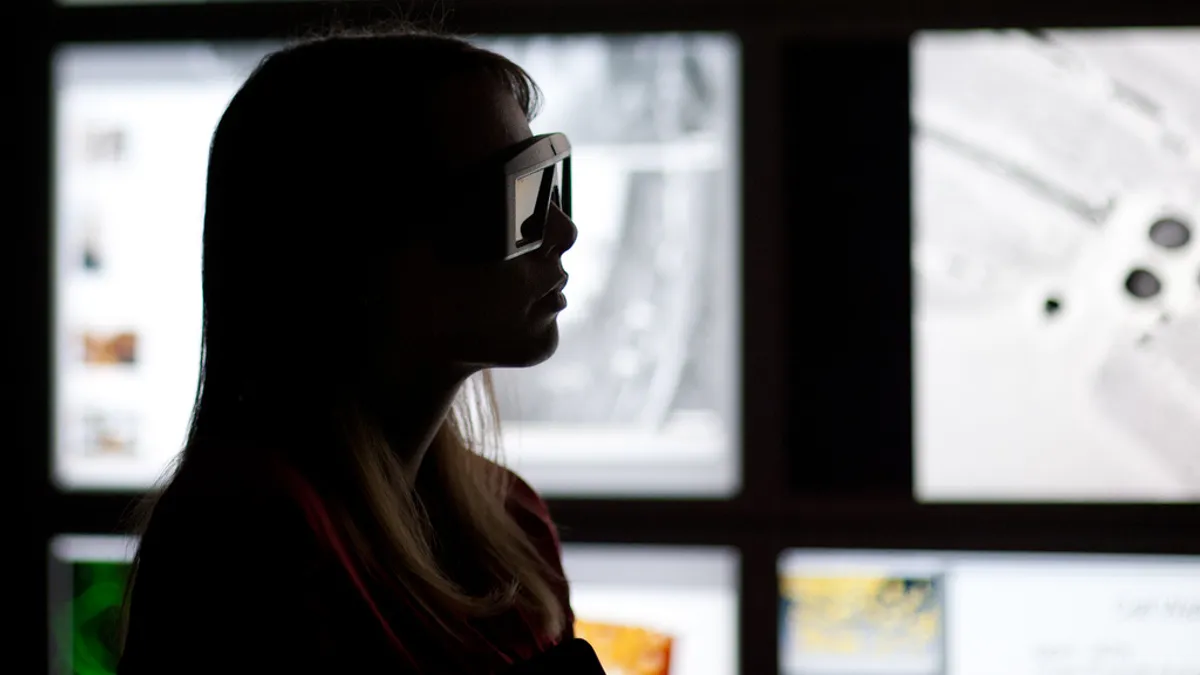Heart rate, body temperature, perspiration levels, geophysical location, time in motion and even EEG brain waves are being incorporated into wearable construction technologies designed to improve worker safety, boost productivity and comfort, and generate valuable human behavioral data for optimizing job sites large and small. Overall, the global wearable market is expected to hit $19 billion in 2018, according to data from Statista.
Born partly from the global success of Fitbit — the company is likely to clear $2 billion in revenue this year for its wristband that collects and tracks biometric data — hardware and software engineers see enormous market opportunity for wearables in the construction industry as contractors look to leverage the technology for keeping job sites working safely and smoothly.
Richmond, VA-based Hourigan Construction is one of those firms. The company just completed Stone Brewing Co.’s East Coast production and distribution facility, in Richmond, and is concurrently working on several military and academic projects where company executives think wearables are likely to make a significant impact.
“We’ve been looking at wearables very seriously and in the immediate future we want to implement a proximity sensor safety vest that will ID when our workers are in areas of danger and also keep track of everyone in case of an emergency,” said Peter Barden, Hourigan's virtual construction manager.
That Hourigan’s first wearable adoption is both a connected device and focused on safety is telling of where key developments are being made in wearable tech for the job site. Tracking worker exposure and alerting and protecting them from hazards in the natural and built environment is a primary driver of wearable design for construction.
Providing real-time wearable data to alternate reality environments promises to better integrate data-active humans into the digital arena. Although challenges to job site adoption and the need for more open-source system development remain, experts say it is inevitable that most wearable devices and the user data they produce will one day be readable in real time through an AR interface.
Safety — and comfort — first
That doesn’t mean all construction wearables need to be connected to realize immediate job site value. For workers in extreme thermal environments, Bosch and Electric Fan Engineering, among other firms, are working on vests to keep workers warm in cold environments and cool in hot ones.
The Bosch 12V Max heated jacket features three warming levels and up to six hours of battery-powered runtime for workers subjected to colder work environments. For asphalt workers and others in the construction industry facing the heat, Electric Fan Engineering has developed a body cooling system that weighs just under two pounds and provides 12 hours of battery-powered chill. As the company looks to evolve the technology, the company says it will focus on reducing the wearable's footprint without sacrificing performance.
User comfort and simplicity in design have become co-mantras to wearable technology developers who recognize an uphill battle to gain widespread worker adoption, particularly with large rates of turnover in the industry.
Australia-based SmartCap, for example, recently debuted a fatigue-awareness app and companion headband that together read EEG brain waves to identify workers who might be falling asleep and prompt them with voice and vibration warnings. The Bluetooth-enabled and app-connected headband is designed to be worn under a hardhat, baseball cap or other typical headwear.
Laura Kassovic is the founder of Mbientlab, in the San Francisco Bay Area, a provider of safety wristbands to track motion, temperature, heart rate, perspiration and motion patterns for construction and utility line workers. She said simplicity is the gateway to wider wearable adoption among workers. “You can’t expect construction workers to change routine in order to adopt technology,” Kassovic said. “Even if it has a value-add from a safety perspective, it still needs to be simple and easy to use in order for someone to adopt it.”
Wearability has been particularly key in the on-road and utility construction verticals that often see teams working at night to avoid traffic or in inclement weather to repair power lines. Jared Rossignol, health and safety director at the Randolph, ME-based Coutts, called the V-Watch Personal Voltage Detector from the HD Electric Company a game changer. The wearable device alerts workers when they’re in the presence of energized materials, as workers can simply clip the voltage detectors on and off their clothing as needed.
Even something as basic as light can be applied at the user-level to improve job site safety. Developed by Illumagear, the Halo Light provides 360-degree illumination for workers to focus on tasks at hand and to see up to a quarter mile away in dark conditions. The Halo Light fits over a standard hard hat and features task, dimmed, 360-degree and a high-alert mode with a rotating and pulsating light source.
AR-ready wearables and human connectivity
Although it doesn’t yet execute functions or communicate data via the internet, the Halo Light is envisioned as being a part of the company's Personal Active Safety System (P.A.S.S.) that could soon locate, integrate with connected wearables and provide detailed worker information through AR hardware such as Google Glass and the Microsoft HoloLens.
Wearables in and of themselves, AR visors can integrate BIM data to create a real-world view of a construction site, providing the wearer with detailed plan and construction information in a way that has largely eliminated paper on the job site. Such hardware and its related software could soon be able to recognize the wearables within its system environment — worn by humans on the job site — and read that data.
That progression will largely be based on how prolific open-APIs become as hardware and software developers advance wearable and AR technologies, said Will Lehrmann, director of product development for construction software firm Procore Technologies. “Other industries went open-platform with AR before construction, which has lagged a little bit further behind, but the space is turning to where tech providers will share solutions and data and let the customers make the best use-case decisions on the things that help improve their business.
Kassovic said her firm will wait out broader AR deployment before investigating full connectivity, preferring instead to provide what she calls “workforce management” data through biometric bracelets to construction managers looking to gain better analytics on safety and productivity.
“We don’t quite think that AR has caught up yet in terms of usability,” Kassovic said. “So we’ll wait for AR to become a mature technology on the job site and then we’ll look to integrate with it. I don’t know if that’s going to happen via headsets, but the opportunity to ID someone who is in a dangerous situation coupled with connectivity that could shut down machinery could be a tremendous value-add.”
Exoskeletons, walk away technology and adoption challenges
Companies are exploring the development of full-body exoskeletons for extremely hazardous and highly industrial work environments. Mitsui believes its Assist Suit AWN-03 will be available within two years as the first iteration of what could ultimately be a Ripley-worthy piece of heavy equipment. Meanwhile, Ekso Bionics envisions adapting technology originally developed to help military personnel to better manage heavy loads in the field to enable construction workers to complete heavy tasks with minimized fatigue and decreased injury rates.
The success of exoskeletons on the market at-large will hinge on how much use the technology sees on a daily basis, said Barden, who added that significant safety considerations still need to be accounted for before the technology leaves the prototype realm. “It’s an area of caution as many of the systems have counterweights, so right now there are a lot of moving parts that could cause some safety concerns just via wearing the exoskeleton itself," he said. "We expect it to see only limited use at first, likely in cordoned off, use-specific areas."
One of the remaining challenges with accelerating wearable technology lies in economics. The large-scale, high-profile projects where the technologies could make the biggest impact are typically awarded to low-bidders expected to maintain tight margins and without the budgets required for investing in new technologies, according to Illumagear CEO Max Baker.
Transferability of wearable devices from worker to worker also remains a barrier to its widespread use. Not only might construction managers be reticent to invest in hardware that could be made redundant in a year or two, but high turnover on the job site presents the possibility of workers departing with the technology. Even if they don’t, the workers who replace them could resist using hand-me-down wearable items for sanitary reasons. Perhaps more importantly, the addition of new workers means more time spent training them on how to use the gear.
“They’re all real concerns and are reminiscent of when tablets first came out and everyone was worried they’d be walking off the job site,” said Lehrmann, noting that the ubiquitous smartphone means most workers are now armed with their own personal tablet anyway. In much the same way, he sees wearable, AR-integrated tech to eventually gain wide adoption. “AR plus wearables have tremendous opportunities in process-related industries like construction," he said, "but using the technology to first solve common job site problems is the only way adoption is going to take place.”





















